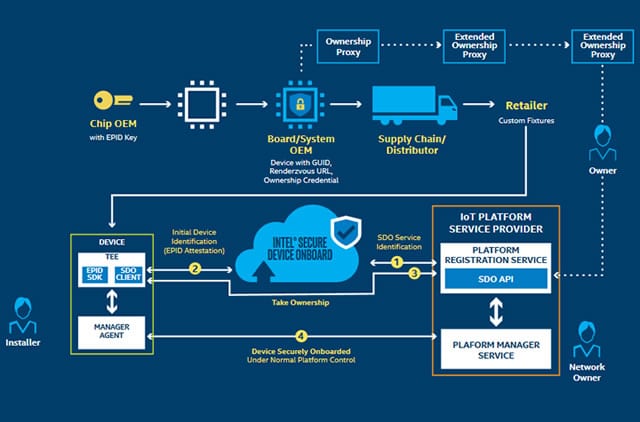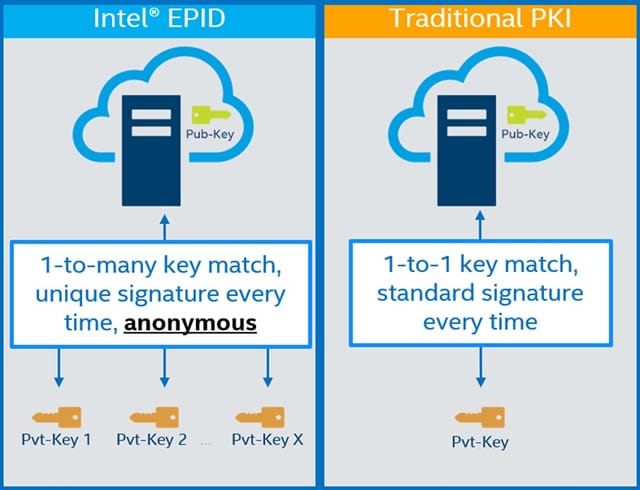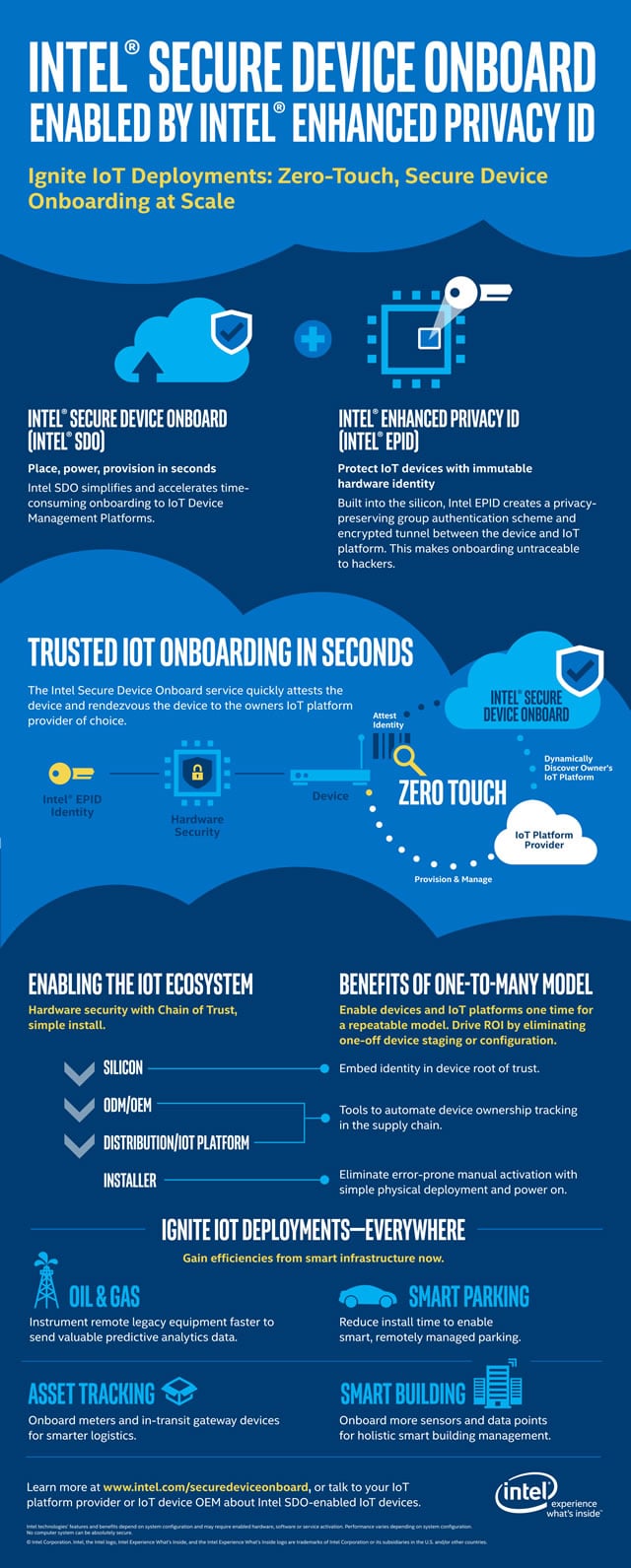Want to realize faster IoT device onboarding leveraging existing device management software platforms? Intel SDO aims to be the solution with quite impressive savings on time and thus money.
The development of the IoT happens at different speeds, depending on among others use case and industry. And the exact same thing goes for the growth of the number of IoT devices which is always a good indicator.
As readers of our site know there will be far less IoT devices by 2020 than the previously expected 50 billion. Although there is clearly an increase of large scale IoT projects as Vodafone found in its IoT Barometer 2017/2018, current forecasts on the number of IoT devices, depending on source, would be more in the range of 30 billion.
On the first day of the IoT Solutions World Congress 2017 event in Barcelona, Intel stated that the reason for the scaled-down outlook are real-time challenges concerning the possibilities to scale IoT deployments and security. Similar challenges were found in the Vodafone IoT Barometer (attendees of the event will learn more about the results and Vodafone is also an exhibitor).
Dramatically reducing IoT device onboarding time: from hours to seconds
IoT device provisioning and management is a major challenge, Intel states, since IoT devices are added manually and that is always a slower processes.
This is especially so since coordination between different people is needed. Intel cites installation technicians, IT network operations and OT teams. The company claims that adding one device can take over 20 minutes per device.
Intel’s Jennifer Gilburg: “Imagine you’re going to install 10,000 smart light bulbs in a factory. How much time should you schedule? Before they can start streaming data, you need to key in each device identity, coordinate network credentials with IT, and register each device with the operational technology (OT) smart building control platform. If you guessed 20 minutes per bulb, you’re about right. For 10,000 bulbs, you’d need almost two years”.
You can imagine that if you have thousands and thousands of devices in larger projects this leads to quite some costs. According to the previously mentioned IoT Barometer 2017/2017, the number of very large scale IoT projects (with over 50,000 of connected devices in action) has doubled in twelve months, just to give you an idea.
As tends to be the case with rather slow and manual operations such as adding and managing an IoT device, technologies come to the rescue. That’s where Intel’s Intel Secure Device Onboard (a.k.a. Intel SDO), which was announced at IoT Solutions World 2017, comes in.

The technology promises to bring down installation time and get IoT devices online in seconds instead of hours, whereby IoT platform as a service providers who use Intel SDO can enable their customers to onboard thousands of connected devices in a secure and automated way.
Intel SDO has a zero touch approach, making it possible for IoT devices to dynamically discover the customer’s IoT platform account at power-on for automatic registration as the press release states.
Intel SDO also uses Intel’s existing Enhanced Privacy ID for anonymous device authentication and the establishment of an encrypted communication tunnel to keep out the bad guys. In fact, the Intel Enhanced Privacy ID key, a.k.a. Intel EPID key, is at the start and center of SDO as you can see and read below.

Intel SDO in the device management software space and in action
To make anything work in IoT partnerships and ecosystems are inevitable.
Intel SDO already has the attention of IoT platform providers, mainly cloud service platform and device management software providers to be precise. Google Cloud, Amazon Web Services (AWS) and Microsoft Azure want to offer integration to support the Intel SDO zero touch approach.
Obviously, Intel SDO is also integrated with Intel’s own device lifecycle management platform, Wind River Helix Device Cloud. Intel further gives an example of what Intel SDO can do with oil and gas company Weatherford, which was part of the Intel SDO pilot program.
You can read more about the launch and the case (which could go up to 290,000 wells which are good for 870,000 sensor data points and close to 10,000 IoT gateways globally) in the press release.
Below is an infographic explaining the whole zero touch approach of Intel Secure Device Onboard, the place of Intel EPID in it and how and where it is used in practice, with IoT ecosystem partners and in different types of applications such as oil and gas (the Weatherford example), asset tracking, smart buildings and more.
In a separate announcement, Device Authority, which is active in Identity and Access Management (IAM) for IoT announced its integration with Intel SDO.

Disclaimer: i-SCOOP has no commercial relationships with Intel or any other party mentioned, all images are property of their mentioned owners. Intel and the Intel logo are trademarks of Intel Corporation in the United States and other countries.

